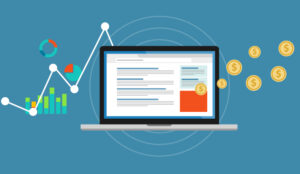We list ten key metrics for measuring CX, while also sharing our advice for extracting the most value from them.
Why Have Customer Experience Metrics?
Organizations use metrics for two key purposes: informing their strategy to improve the customer experience and assessing the effectiveness of their current operation.
Metrics can measure the success of previous strategies that we have implemented to improve the customer experience.
In terms of informing strategy, which will be the main focus of this article, metrics can measure the success of previous strategies that we have implemented to improve the customer experience.
Benchmarking these metrics over time is also a great tool for tracking your strategy against your competitors.
Customer experience metrics can also help us to identify our customer retention rates across different products/customer journeys, highlight areas for future investment and increase our understanding of the value certain products have.
Metrics to Inform Your CX Strategy
These metrics may provide the insights to positively influence your CX strategy
The 10 Metrics for Measuring the Customer Experience
To achieve each of the benefits highlighted above, it may be good to actively measure each of the following ten metrics (and likely more), to create a clearer picture of the customer experience.
1. Customer Effort
In an ideal world, the customer experience will be both memorable and easy. Customer effort is a key metric in terms of measuring the latter.
“One of the key considerations as we move forward within the industry is measuring effort across all channels and interactions, because we need to identify points of friction for the customer,” says Jo Hale, an experienced contact centre director.
By identifying friction points, we can then work to remove them or to add value to them, to create a better overall experience for the customer.
Find out how to measure this metric in our article: How to Calculate Customer Effort.
2. Customer Emotion
Using customer emotion as a metric helps us to assess whether or not we are creating a memorable experience, which we want to do in accordance with the peak-end rule.
The peak-end rule dictates that we want to create two peaks in positive emotions, one in the middle and one at the end of the customer journey, to create an emotionally fulfilling experience.
If we design our customer journeys around this principle, we should be using customer emotion as a metric to assess our success in doing so and creating a memorable experience.
3. Customer Satisfaction (CSat) / Net Promoter Score (NPS)
NPS is good for measuring the loyalty of our customers, while CSat is much more about the here and now.
Jo says: “Both metrics are important, but we cannot use them interchangeably. We need to think carefully about how and when we use them.”
Both metrics are important, but we cannot use them interchangeably. We need to think carefully about how and when we use them.
NPS is a great measure to use between departments, especially if you have a system like NPS Champions, so everyone takes responsibility for the score and works together to improve the customer experience.
CSat is much better used as a gauge of current performance, while we can also use the metric for other things like testing our quality scorecards, to ensure we are measuring what matters to our customers.
4. Quality Scores
The contact centre is often the make-or-break place for the customer experience, and quality scores allow us to assess the performance of advisors in these moments that matter.
In the creation of our customer journeys, we will have likely made a number of customer commitments and we need to consider whether or not our level of service is meeting these commitments. This helps us to ensure that we are keeping our customer promises.
Not only that, quality scores have the potential to drive the right advisor behaviours, so not only are we measuring our performance at a crucial point, but we can use the scores to spark positive change.
Find out how to calculate quality scores by reading our article: Call Centre Quality Parameters: Creating the Ideal Scorecard and Metric
5. First Contact Resolution (FCR)
The customer experience should be frictionless, yet too often customers have to make repeated efforts to solve the same query – causing frustration that undermines your efforts to create a positive customer experience.
We need to get to the root cause of repeat contacts and ensure FCR, which we should again do by splitting the measure across query types and channels.
When you do this, FCR becomes an invaluable tool in highlighting areas for process improvement, helping us to create smoother experiences for customers.
6. Customer Complaint Ratios
If we can compile complaints across the categories, we can identify common sources of customer frustration.
Spotting trends across channels and query types is key, and if we can compile complaints across the categories, we can identify common sources of customer frustration.
While we can highlight process improvement opportunities through using FCR for trend spotting, the beauty of customer complaints is that there is often open feedback.
Trends in open feedback gives us direct guidance in where we need to improve and which touchpoints are specifically causing problems for the customer.
7. Employee Engagement Rates
We all know the value of high advisor engagement in terms of improving motivation and employee retention rates, but it is also a good indicator of the service that customers receive at certain touchpoints.
Engaged employees are more likely to want to do more for the customer and will be more receptive to developing as good customer service advisors.
With advisors eager to do a better job, they will provide customers with improved experiences, so we need to keep track of employee engagement and try to keep it at a high level.
For our advice on boosting contact centre engagement, read our article: How to Improve Agent Engagement
8. Churn Rates
It’s much more valuable to hold onto existing customers than it is to acquire new customers. There is therefore a great deal of value in finding patterns of when customers leave and identifying what their reasons could have been.
While we assess churn rate as a measure of the business’s overall performance, by dissecting the measure we can find out where customers are most likely to exit their journey and use this information to improve the customer experience.
Also, employee churn rates will give us insight into our culture – which, if the result is particularly alarming – is something that could negatively impact the customer experience. So both types of churn are particularly good to measure.
9. Product Holding per Customer
This metric gives you a good idea of how committed the customer is to your business, and if we can segment customers through this measure, we can prioritize who gets what type of experience.
If a customer’s interest in our brand is stagnating, we can send them a proactive offer to re-engage them with our business and refresh their experience.
For example, if a customer’s interest in our brand is stagnating, which we can uncover with this metric, we can send them a proactive offer to re-engage them with our business and refresh their experience.
By educating and empowering advisors to understand this metric, we can encourage them to adapt their approach to service through a better understanding of the customer – although this would require good coaching.
10. Customer Lifetime Value (CLV)
By using customer lifetime value (CLV), we can analyse which customers are the most profitable, helping us to put into perspective the cost of a good customer experience.
The metric also allows us to assess the buying habits of our most valuable customers and which journeys they take. We can then prioritize these journeys when we look to make improvements to the customer experience and look to guide other customers onto them.
Just remember that we must do this subtly, through gentle up-selling, so that the customer gets a better deal while we increase their value to our brand.
Find out how to measure this metric in our article: How to Calculate Customer Lifetime Value
How to Best Use Your Metrics
There are many different ways in which you can use the metrics above, but we must firstly think about our own organization and which measures relate closely to our customer experience strategy.
Then, we need to think about whether or not everyone in the organization understands each metric and how it is measured, to ensure that everyone has the clearest possible view of the customer experience.

Think about whether or not everyone in the organization understands each metric and how it is measured, to ensure that everyone has the clearest possible view of the customer experience.
By having this understanding, we can share metric results across the organization and greater appreciate each other’s roles and how they impact the customer.
Opening up such dialogue with other departments within the business will be difficult. But if we do, we can share wider organizational goals to improve the customer experience and collectively decide upon which metrics we should use and what we use them for.
As an example of how we can use the metrics listed above, take a look at the bullet point list below:
- Driving new products
- Creating culture
- Engaging colleagues
- Engaging customers
- Driving strategy
- Driving shareholder value
- Career progression/recognition
- Fixing processes
- Training
- Engaging your teams
- Helping people understand their role within the business
If we can unite the business behind a core set of metrics, we can uniformly measure the customer experience across each department and measure how we are performing against our organizational goals at each stage of the customer journey.

Jo Hale
As Jo Hale says: “Often, when you go into one department they’ll have their own set of metrics and when you go into the contact centre, they’ll have a completely different set of targets. But to create the ideal customer experience, the departments should be working together.”
“So, you should be sharing targets – especially if you’re trying to create a culture around the customer – and uniting everybody behind your targets to improve the customer experience.”
With this in mind, we need to think about which metrics we want to measure, in accordance with what matters most to our organization, and discuss how we will use each metric, considering each of the 11 example uses above.
All in all, just try to consider these three questions:
- How are we using our metrics?
- What are we getting from them?
- Are they changing the culture or behaviour within our organization?
We need to consider these three questions carefully, before we move onto the more technical things, such as considering if all of our metrics are joined up.
Are Our Metrics Joined Up?
One great way to join our metrics up is to map our customer journey and find out where we should be collecting our metric results, to gain the most insight into the measure.
Giving an example of when a contact centre got this wrong, Jo says: “I recently ordered a bed online and before it was delivered, I had received five texts and an email from the company to calculate an NPS, but all I had done at this point was go onto their website.”
“In total, by the time I got my bed, I had received 22 different contacts. This indicates that, while the organization may have laid out their customer journeys, they hadn’t necessarily done so across each of the channels.”
We should be considering our metrics across all channels and ensuring visibility at all levels, to ensure that each department can see the impact that they are having.
So, we should be considering our metrics across all channels and ensuring visibility at all levels, to ensure that each department can see the impact that they are having on the various measures.
Other key points to consider here, according to Jo Hale, include:
- Who owns the metric?
- How can each department influence the metric?
- What technology is being used to generate the metric results?
Jo says: “There is great value in identifying which metrics are most important to you and, if you decide that you should be measuring something else, think about whether or not you need investment.”
“If you do, consider what the overall benefits are that are coming from your strategy, relating to this new metric, and use this in your pitch for greater investment.”
Then, once we’ve highlighted a metric that we wish to calculate, we need to think about what we can do to collect/access the necessary data/customer feedback and ensuring everyone knows how we plan to calculate the measure.
6 Tips for Measuring the Customer Experience
From all of the advice above, we have compiled a series of tips that you need to keep in mind while measuring the customer experience.
- Agree which metrics are key to your strategy – Understand the importance of each of the metrics you use, where you measure them and how they work.
- Ensure all metrics are understood – Share this understanding, so that each department understands how they are measured, so everyone can get to grips with the greater impact of the metric result.
- Create visibility across the organization – Make sure that each department has access to metric results, so they understand how their process changes are influencing the customer experience.
- Know your customer journeys – Ensure that each department knows which touchpoints along the customer journey they are responsible for and how they can assess their performance, without over-contacting the customer.
- Share success at all levels of the organization – If we’ve improved a process that has improved a customer experience metric, that should be shared throughout the organization – so that everyone is excited about meeting organizational goals.
- Use technology to keep things easy – Try to simplify data, trending and visibility through smart dashboards or analytics software, especially if you are measuring a large number of metrics.
Each of these tips has been recommended by Jo Hale, who encourages us to try to keep things as simple as possible and create a metric strategy that is easy to both understand and use.
For more on the topic of metrics, read our articles:
- An Introduction to Contact Centre KPIs and KPAs
- 10 Experts Share Their Favourite Advice on Call Centre Metrics
- What Are the Industry Standards for Call Centre Metrics
Author: Robyn Coppell
Reviewed by: Megan Jones
Published On: 16th Oct 2019 - Last modified: 23rd Apr 2024
Read more about - Hints and Tips, Customer Experience (CX), Editor's Picks, Jo Hale, Key Performance Indicators (KPIs), Metrics










































